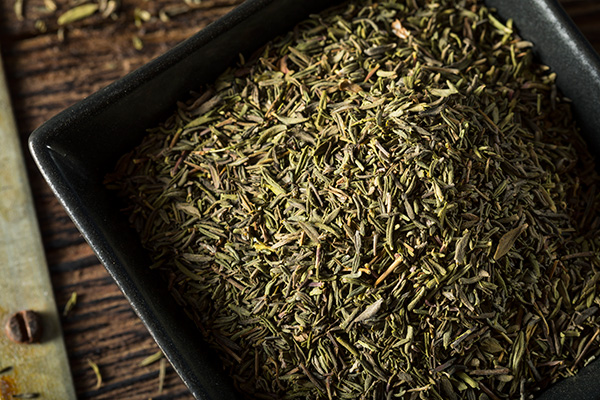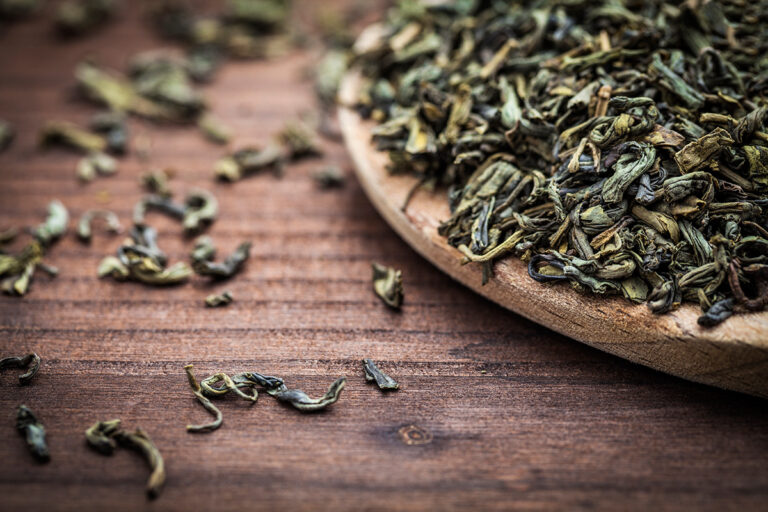What Color Should Green Tea Be?
Produced from the Camellia sinensis plant, green tea is a sought-after beverage worldwide, recognized for its numerous health-related benefits and extensive history.
But have you ever wondered what color green tea should be?
In this article, we will explore the variety of shades green tea leaves can take. We will also delve into what affects the color of tea leaves and how to tell if your green tea is of high quality.


What Color Is Green Tea Supposed to Be?
The color of green tea spans from subtle light green to intense dark green, depending on the tea type and its processing method. Below are some common types of green tea and their associated colors:
Hojicha Tea
Hojicha is a roasted green tea that has a brownish color due to the roasting process. The roasting also gives it a unique, slightly smoky flavor.
Sencha Tea
Sencha is the most common type of green tea in Japan. It is typically a bright, vibrant green color due to its steaming process, which helps preserve the green pigments in the leaves.
Matcha Tea
Matcha is a powdered green tea made from specially grown and processed leaves. The tea’s striking, deep green shade results from the high chlorophyll concentration in the leaves, which are raised in the shade before being ground into a fine powder. This process increases the chlorophyll content and produces a rich, bright green color.
Genmaicha Tea
Genmaicha is a blend of green tea leaves and roasted brown rice. The hue of this tea can fluctuate based on the proportion of tea leaves to rice. Still, it usually appears as a pale green or yellow-green color.
Gyokuro Tea
Gyokuro is a high-quality Japanese green tea that is shade-grown, similar to matcha. The leaves possess a deep, dark green color due to the high chlorophyll levels from growing in the shade.
Kabusecha Tea
Kabusecha is another shade-grown Japanese green tea, but it is not shaded for as long as gyokuro. This results in a slightly lighter green color than gyokuro, with a more delicate flavor.
Fukamushicha Tea
Fukamushicha is a deep-steamed green tea, which means that it is steamed longer than other green teas. This process gives it a darker green color and a slightly thicker consistency.
Kukicha (Karigane) Tea
Kukicha, also known as Karigane, is a Japanese green tea made from the stems and twigs of the tea plant. The color of kukicha can vary, but it generally appears as a light green or yellow-green color.
Konacha Tea
Konacha is a green tea made from the fine particles and dust leftover from processing other teas. It usually has a deep green color and a slightly bitter flavor.
Kamairicha Tea
Kamairicha is a pan-fired Japanese green tea, which gives it a slightly yellow-green color. The pan-firing process imparts a unique flavor profile with a mild and slightly sweet taste.
What Affects the Color of Green Tea?
Several factors can influence the color of green tea leaves, including:
- Processing methods: How green tea leaves are processed can significantly impact color. For example, steaming, pan-firing, or roasting can produce different shades of green.
- Growing conditions: The growing conditions of tea plants can influence the color of the leaves. Shade-grown tea plants like matcha and gyokuro contain higher chlorophyll levels, leading to a more vibrant green color.
- Oxidation: Green tea leaves are not oxidized like their black tea counterparts, which allows them to keep their green color. However, extended exposure to air can cause green tea leaves to oxidize and acquire a brown hue.
- Age and storage: The age of the tea leaves and how they are stored can also impact their color. Over time, green tea leaves can lose their vibrant green color and become dull or brownish.
Additionally, the color of the brewed tea can also be impacted by multiple factors. Here are a few:
- Hard Water: The quality and mineral content of the water you use to brew your green tea can significantly impact its color. High levels of minerals like calcium and magnesium in hard water can react with tea compounds, making the tea appear dull, hazy, or slightly brown. To ensure a more vibrant color, it is recommended to use filtered or bottled water with low mineral content when brewing green tea.
- Oversteeping: Steeping green tea for too long can produce a darker, more intense color and a bitter taste. Oversteeping may lead to the release of additional tannins from the tea leaves, resulting in a darker color and increased astringency. In order to avoid oversteeping, follow the recommended steeping times for the specific green tea you’re brewing, typically between 1 and 3 minutes.
- Water Temperature: Brewing green tea at the correct temperature is essential for achieving the perfect color and flavor. Using too hot water can cause the tea to become overly dark and bitter, as it extracts more compounds from the leaves faster. On the other hand, water that is too cool may result in a weak and pale-colored brew. The optimal water temperature for brewing green tea varies depending on the type of tea. Still, it generally falls between 160-185°F (70-85°C).
By following the recommendations above, you can make the perfect cup of Japanese green tea.
Why Is My Green Tea Brown?
If your green tea looks brown, it might be caused by factors such as oxidation, age, or the particular tea variety you are brewing.
What Are the Best Green Tea Brands?
We have pored over dozens of green tea brands and compiled a list of top contenders, both for loose-leaf and tea bags.
Final Thoughts
The hue of green tea can differ significantly based on the tea variety, processing method, cultivation conditions, and the age of the tea leaves. Understanding these factors can help you appreciate the diversity and beauty of green tea even more. As long as you properly store and brew your green tea in line with the suggested guidelines, you can relish its one-of-a-kind flavor and health benefits.
FAQ
What Causes the Color Difference Between Black Tea and Green Tea?
The oxidation process is the primary factor that causes the color difference between black and green tea. Black tea undergoes a higher level of oxidation, which turns the leaves dark brown or black. Conversely, green tea undergoes minimal oxidation, allowing it to maintain its green hue.
How Can You Tell if Green Tea Is High Quality?
To tell if green tea is high quality, consider the following factors:
- Appearance: Look for consistency in the tea leaves’ shape, color, and texture. Although assessing tea leaves by appearance can be unreliable, it still has the potential to indicate their quality.
- Smell: Assess the aroma of the wet leaves, not just the dry ones. Top-quality tea will exhibit a complex, deep, and persistent aroma.
- Taste: A high-quality green tea will have a clear and balanced flavor profile with a mix of bright and deep notes. Taste is subjective, so make sure the green tea is enjoyable for you personally.
- Mouthfeel: Focus on the texture, weight, dryness, and how the tea feels as it goes down your throat. A good quality green tea will have a pleasant mouthfeel, a thicker consistency than water, and a suitable level of dryness or astringency.
Furthermore, numerous tea companies provide sample sizes, allowing you to taste various green tea varieties before committing to a bigger purchase. This can help you find the tea that best aligns with your taste preferences and quality expectations.






